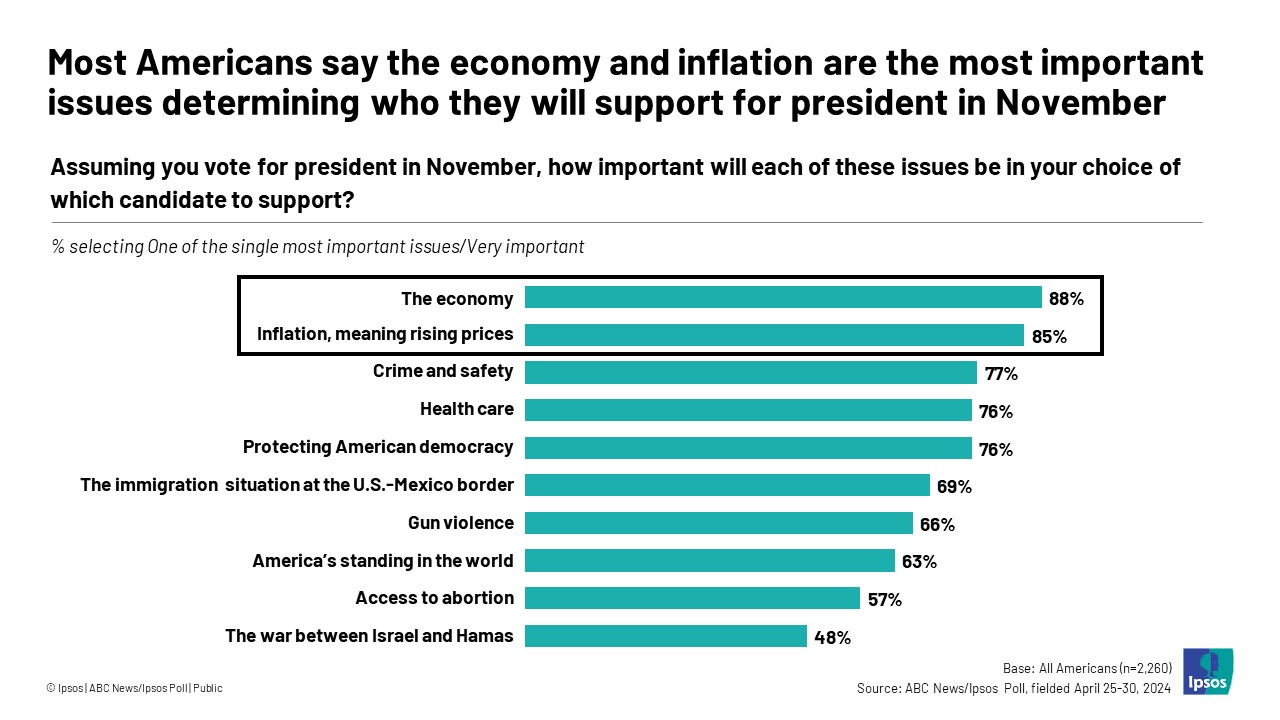The fight to bring inflation down in the U.S. has been tough, but after more than two years, it’s working. High interest rates, better supply chains, and more employment have driven inflation down to about 2.4%, near where it was before COVID.
But next year could change everything, depending on who wins the White House. Either Donald Trump or Kamala Harris will shape economic policies that could decide if inflation stays under control or spikes.
Both candidates support growth, but their ideas could mean very different inflation paths. Economists worry Trump’s plans could set off new inflation problems. He’s considering broad tariffs on imports, worker deportations, and pushing the Fed to cut interest rates.
Brian Riedl of the Manhattan Institute says Trump’s moves are “moving more in an inflationary direction,” and he’s “legitimately worried about inflation worsening in 2025.”
Potential inflation impact of Trump’s policies
Trump’s policies target economic growth, but he faces a much different economic scene than in his first term. Back then, inflation was low. Today, inflation is a pressing issue. The Fed has fought to cool down rising prices with high interest rates, but Trump’s plans, including lower rates, could revive inflation.
Bond yields have already risen on fears of higher deficits under Trump, signaling investor concerns about potential inflation spikes.
Trump’s former legislative-affairs director, Marc Short, says Trump’s new policies could trigger fights with the Fed, which has kept inflation in check. Short noted that the 2008 financial crisis kept inflation low during Trump’s first term, but now inflation risks are much higher.
Inflation soared in Biden’s term as the U.S. reopened post-pandemic, peaking at 9.1% in 2022 when the Ukraine war disrupted global energy.
While the Fed’s rate hikes and steadying supply chains have cooled prices, experts worry Trump’s ideas could reverse that progress.
Trump’s trade and immigration plans give him leeway to act without Congress. He has proposed wide-reaching tariffs, with some on Chinese imports reaching as high as 60%. Adam Posen of the Peterson Institute says if Trump sticks to his plans, it will bring a “negative supply shock.”
Prices will rise, and the economy’s ability to supply goods will shrink. The Peterson Institute predicts a major economic impact, especially if Trump’s tariffs and immigration policies lead to price hikes and disrupt the labor market.
A study from the Peterson Institute suggests deporting immigrants could cut economic output while driving inflation. With fewer workers, companies will face higher labor costs and pass these costs to consumers.
Oren Cass from American Compass, a pro-Trump think tank, argues that higher wages for American workers would naturally increase prices. Cass sees this as “how markets are supposed to work.”
Harris’s approach to managing inflation
Harris has her own inflation plans but hasn’t proposed anything that risks immediate inflation. Harris wants to increase affordable housing, address corporate price gouging, and expand tax credits for families. She says she will fund these plans with new taxes and revenue instead of deficit spending.
Riedl, the economist, believes that if Democrats keep control, inflation could remain “sticky and stubborn” but won’t spike dramatically. Harris’s plans also don’t include any major deficit cuts, which could slow inflation relief over the long term.
Trump wants to extend parts of his 2017 tax cuts, with some targeted at corporations and some aimed at removing taxes on tips, overtime, and Social Security benefits for retirees. Critics say Trump’s plan could widen deficits without stimulating enough economic growth to offset the inflation impact.
Economists warn that deficit-heavy spending could spark inflation in sectors most affected by rising consumer prices. The Committee for a Responsible Federal Budget estimates that Harris’s proposals would add $3.5 trillion to the deficit over the next decade, while Trump’s could add $7.5 trillion.
Trump’s economic allies argue that tariffs and immigration restrictions would help American workers by raising their wages. But evidence suggests that these policies might shrink the labor force and increase production costs.
University of Colorado economists studying deportations from 2008 to 2014 found that for every million unauthorized workers expelled, 88,000 American jobs disappeared. Losing immigrant workers can hurt U.S. industries like food and hospitality, which would likely cut jobs rather than hire native-born workers to fill these roles.
The Fed’s response and interest rate implications
The Federal Reserve’s next steps depend on how inflationary policies play out. If tariffs and high spending rekindle inflation, the Fed might slow or stop rate cuts.
Fed officials recently started dialing rates down from their two-decade highs but warn that a new inflation round could mean tougher rate decisions.
Trump pushed for lower rates during his presidency, and in 2026, he would choose a new Fed chair if re-elected. Short expects Trump to be “very active” in influencing the Fed if inflation rises again.
Trump’s new tariffs would be far larger than those imposed in 2018 and 2019, and they could raise consumer costs across the board. AutoZone’s CEO Philip Daniele said that tariff costs would “pass back to the consumer,” as companies won’t absorb the expense.
While Trump’s team argues that prior tariffs didn’t create inflation, economists believe broader tariffs could be different. Christopher Waller, a Trump-appointed Fed governor, said in July that the Fed should “look through” temporary price jumps due to tariffs.
But Austan Goolsbee of the Chicago Fed worries that ongoing tariffs could trigger wage demands and retaliation from trade partners, making inflation persistent.
For the Fed, standing firm on inflation means avoiding a repeat of their “transitory” error in 2021. When prices rose after COVID, the Fed initially misread the spike as temporary. They later raised rates aggressively to prevent higher prices from becoming the new normal.
Peterson Institute’s Posen warns that a second inflation spike would be even harder to control, especially with a president leaning on the Fed for rate cuts. “If you get a second round of inflation,” he said, “it’s going to be much harder” for the Fed to keep it under control.





